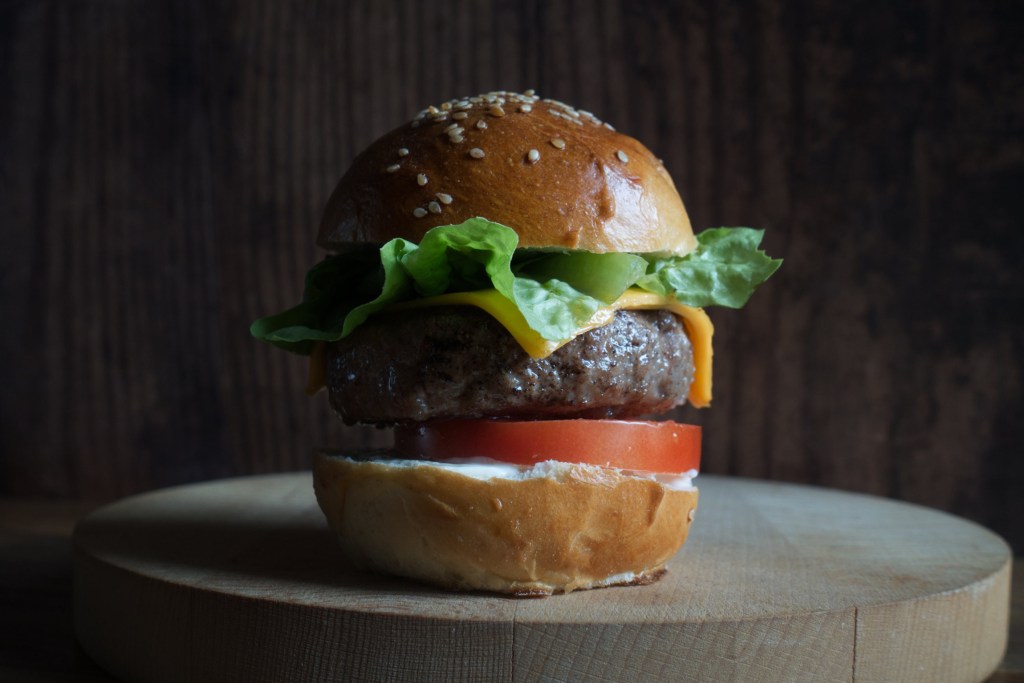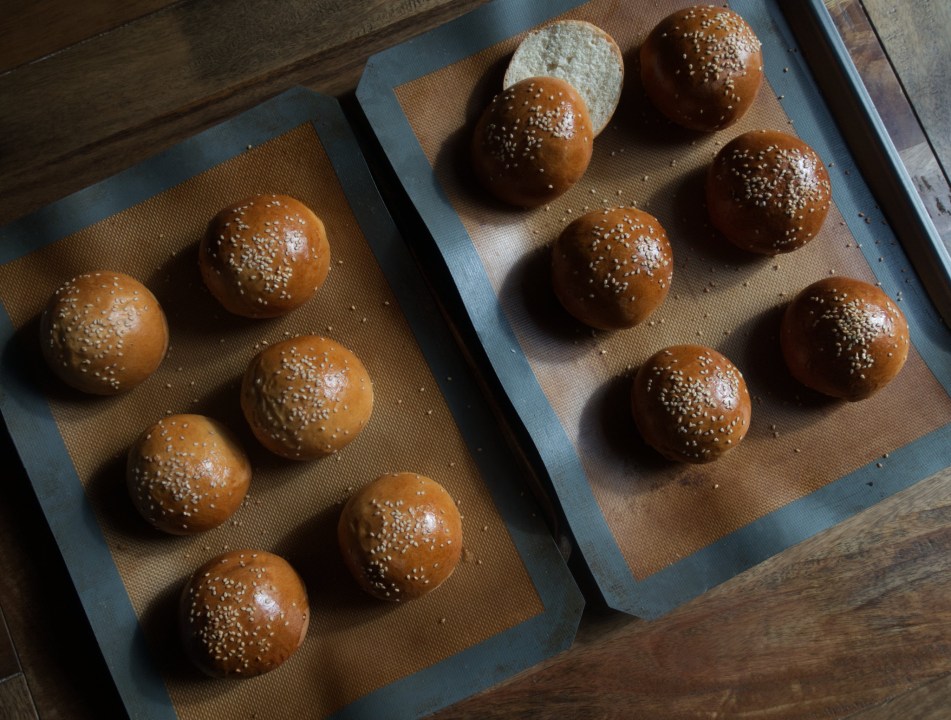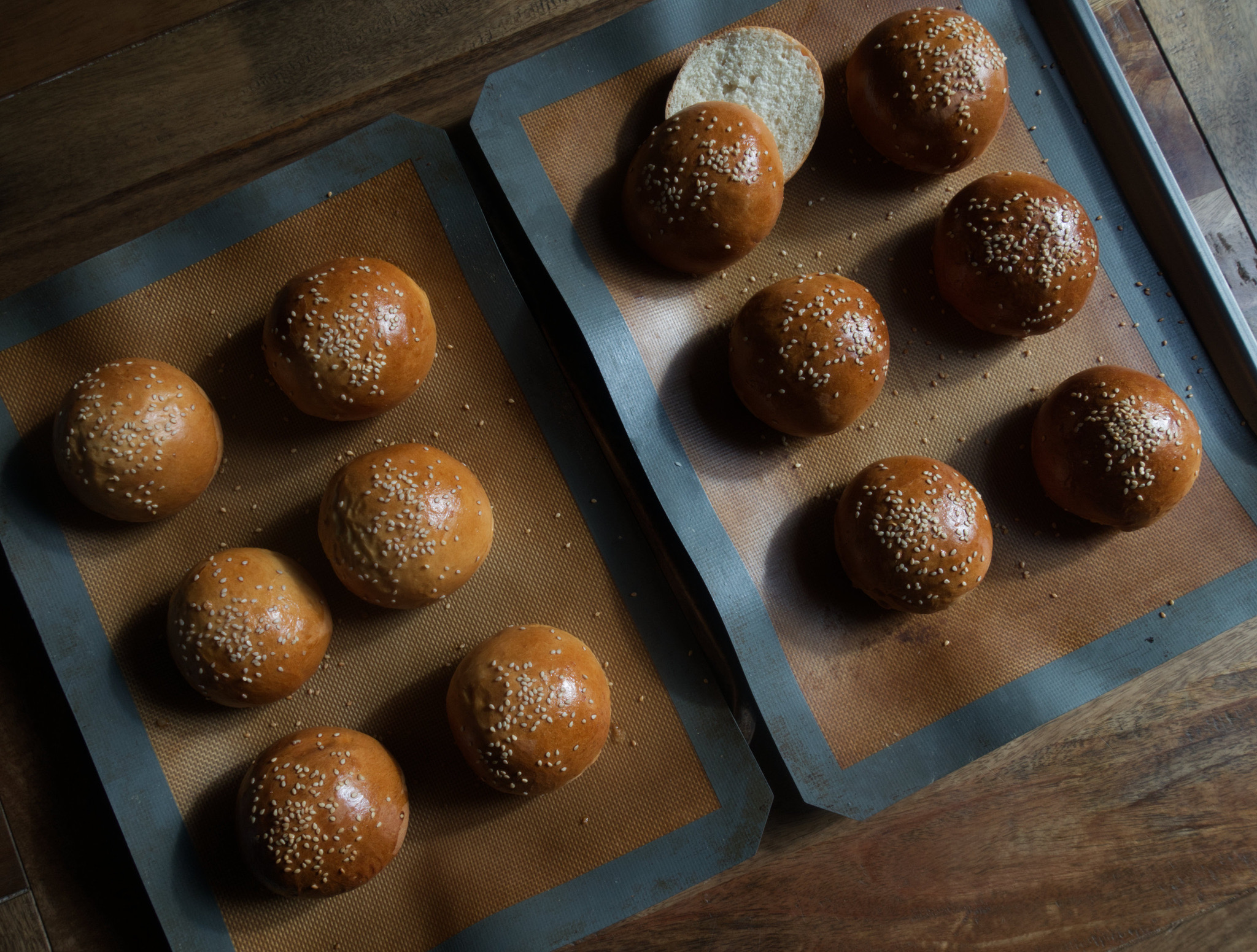Do you ever find yourself holding forth on a topic you hadn’t realised you cared about? You know, someone asks you an innocuous question in passing about the merits of slow cookers, or the best way to grow cabbages, and before you know it, 20 minutes has passed and you’re still grandstanding.
There are a few topics that have crept up on me like this during my life: I have found out that I feel extremely strongly about pyjamas (pro), low-calorie cooking spray (anti) and the TV show Stars in their Eyes. And, it turns out, burger buns. I truly didn’t believe I had anything approaching an opinion on burger buns. But the moment I turned my mind to it, I realised that, to the contrary, I had very strong opinions on this apparently benign subject.
So what is required of a burger bun? Burger buns should be richer than the normal bread buns that you’d use for a cheese or ham sandwich: they’re contending with a lot of different fillings and need to be able to hold their own against the fat, acid and salt. They have to be soft enough that you’re able to bite through both halves and all the fillings without accidentally tugging the whole thing into your mouth, like a baby owl, swallowing it whole. You can achieve both of these things by using an enriched dough: a bread dough that has butter, eggs, milk or sugar kneaded into the dough.
Burger buns have to carry a heavy load: they mustn’t disintegrate into sogginess as soon as they see a tomato or a squirt of mayo
But, if you add enough of that butter, eggs, milk and sugar, you end up with brioche buns – the sine qua non for most early 2000s pub burgers. For me, brioche burger buns are much too far in the other direction: I am big on structural integrity, and I don’t want my many carefully placed fillings to splurge out as the whole thing tumbles into a collection of golden, butter-rich crumbs. Burger buns have to carry a heavy load: they mustn’t disintegrate into sogginess as soon as they see a tomato or a squirt of mayo.
So I’m looking for a middle ground: rich, but not too rich; tender but not too tender. How do I make the Goldilocks of golden buns? By enriching the dough with an egg and quite a bit of milk, but only a little butter, and a scant tablespoon of sugar, stopping short of a brioche dough. This produces a beautiful, tight golden crumb that has a hint of sweetness, but no more. After all, I want my burger sandwiched between a bread bun, not something closer to a doughnut.
Egg-washed to ensure glossy tops, and scattered with sesame seeds, this really is a top burger bun. My husband, who loves burgers so much he is in a WhatsApp group devoted to them, declared these the best burger buns he’d ever had. So if you’re making the most of the warm bank holiday weather, why not try making your own burger buns for your barbecue?
This amount of dough makes eight large burger buns, or 12 slightly smaller buns; my burgers weren’t enormous, so I plumped for the smaller bun, but it will make no difference to the proving time, and a matter of two or three minutes to the final baking time. If burgers aren’t your thing, this dough can also be used to make eight hot dog buns by rolling the dough into sausages instead of balls – or even lobster rolls (fancy!) if you shape into sausages and then sit them slightly closer together, on one tray, so that they prove and bake into one another. Once cool, slice the buns apart from one another using a bread knife, to create the square-cut sides typical for a lobster roll. The buns freeze well: once cool, place in a Ziploc bag, or a tightly sealed freezer-safe container, and defrost thoroughly before using.

Makes 8-12 buns
Takes 4 hours, including proving
Bakes 12 minutes
What you need
500g strong white bread flour
7.5g instant yeast
200ml milk
1 egg
15g sugar
5g salt
50g butter
To top
1 egg, forked with a small splash of water
2 tbsp sesame seeds
- Mix together the strong white bread flour, instant yeast, sugar, salt, milk and egg. Knead by hand or on a stand mixer until the dough comes together. Add the butter in small pieces, and knead into the dough. Knead for 10 minutes in a stand mixer, 15 minutes by hand until the dough is stretchy and soft, but no longer sticky. Cover the bowl, and leave the dough to prove in a warm, dry place for a couple of hours, or until it has doubled in size.
- Divide the dough into 8 pieces for big burger buns (approximately 100g each), or 12 pieces (approximately 70g each) for small burger buns. To shape the buns, fold the dough in on itself to form a ball. Place the seam of the ball down on a worktop, with the smooth side facing you. Place your hand over the ball of dough, with your fingers forming a cage around the ball, touching the worktop. Move your hands in small, fast circles – this will tighten the dough into a smooth ball, pulling it together. Place the shaped balls on to two lined baking trays. Cover lightly with clingfilm, and leave to prove for another two hours, or until doubled in size.
- Preheat your oven to 200°C. Brush the top of the buns with egg-wash. Be sparing: you want a good coating on the top of the buns, but not for it to drip down, as this will create a skirt of egg around the base of the bun when it bakes. Sprinkle with sesame seeds. Bake for 10-15 minutes until the buns are puffed, and golden-brown. Allow to cool before slicing in half and filling.







Comments